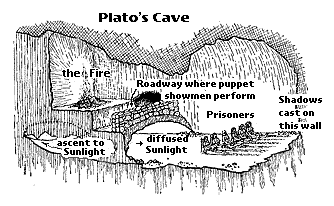General:
1. The
narrator Nick, who moves out to New York and lives next door to Gatsby. Gatsby
is rich and has an extravagant life, which throws a lot of huge parties. He was
born poor and his real name is James Gatz. When he was young he fall in love
with this rich girl name Daisy, but couldn’t marry her because he was poor boy.
He goes to see Daisy and Tom, some friends he knows from Midwest. He finds out
that Daisy is unhappy and Tom is having an affair. Tom wants Nick to meet his
girlfriend Myrtle. Gatsby sends an invitation to Nick to one of his parties. Jordan
tells Nick that Gatsby and Daisy were in love and she almost ran away with him.
She almost didn’t marry Tom because she still loved Gatsby. Gatsby wants to
invite Daisy to his house, so she can see he is rich now making their nothing
holding them back from being together. Daisy goes to Gatsby house and discovers
that they still love each other. Gatsby became rich after a friend; Dan Cody
taught him good manners. Gatsby just wanted to get rich and get Daisy back. Tom
tells Gatsby that the only reason he has made so much money was because he sold
illegal liquor and daisy loved him for that reason. In an accident Myrtle was
killed and daisy killed her because she was the one driving the car. Gatsby is
mad because Daisy isn’t going to leave Tom for him.
2. Learning
that people social status has great impact on how you see people. Daisy loved Gatsby,
but did marry him only because he was poor. Once he got rich she was married
and it was too late. Sometimes you need to let the ones you love leave.
3. The story
is very ironic because Gatsby loves Daisy and the only way that he can be with
her is if he is rich like her instead of being a poor man, once he gets
rich it’s all too late for their love.
4. Dramatic irony-Something is known by the reader but not by
the characters. For instance, when Gatsby and Daisy have an affair. Tom doesn’t
even find out he had not a clue that it was happening.
Situational irony- An event happens that is contrary to the expectations of the reader. At the very end of the story contrary to the expectations or at least the hopes of the readers, we were assuming that Daisy was going to leave Tom instead of staying with him.
Foreshadowing- This was used a lot in the book. For example, the reader could infer that Gatsby was going to take the blame for the murder of Myrtle because it was in his car. He only did it out of love to Daisy.
Situational irony- An event happens that is contrary to the expectations of the reader. At the very end of the story contrary to the expectations or at least the hopes of the readers, we were assuming that Daisy was going to leave Tom instead of staying with him.
Foreshadowing- This was used a lot in the book. For example, the reader could infer that Gatsby was going to take the blame for the murder of Myrtle because it was in his car. He only did it out of love to Daisy.
Setting: This was very important to the story because it was
Midwest, which is full of new opportunity, wealth etc. just like Gatsby and
Daisy.
CHARACTERIZATION
2.The syntax and diction use by the author were very simple to understand. He was straight forward and to the point. Also used a lot of imagery for instance when he was a poor man and then became rich you can picture that he put in a lot of hard work in to be able to marry his love.
3. I thought that the protagonist was both static and dynamic character. At first he was a certain way because he was poor, but after he fell in love he had to change according to himself to have Daisy. He saw that it was a necessity to have Daisy that she would only love him if he was rich, but even then when he became rich he still didn’t marry her because she was already married to a person worse than him.
4. Yes, I can relate to Gatsby because people let go of their loved ones in order to let them be happy. They know that they need to respect each other’s decision whether or not they approve even though it could bring them great pain.
CHARACTERIZATION
2.The syntax and diction use by the author were very simple to understand. He was straight forward and to the point. Also used a lot of imagery for instance when he was a poor man and then became rich you can picture that he put in a lot of hard work in to be able to marry his love.
3. I thought that the protagonist was both static and dynamic character. At first he was a certain way because he was poor, but after he fell in love he had to change according to himself to have Daisy. He saw that it was a necessity to have Daisy that she would only love him if he was rich, but even then when he became rich he still didn’t marry her because she was already married to a person worse than him.
4. Yes, I can relate to Gatsby because people let go of their loved ones in order to let them be happy. They know that they need to respect each other’s decision whether or not they approve even though it could bring them great pain.
